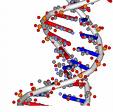Rule 26 Modifications To Limit Inquiries To Experts
By admin on June 16, 2009
 To make expert depositions more efficient, the U.S. Judicial Conference Advisory Committee on Civil Rules has proposed that lawyers no longer be permitted to interrogate opposing experts about their communications with the lawyers who retained them. Under the proposed rule changes, draft reports will be subject to work product exemption and will not be discoverable. As Jeffrey Greenbaum, a partner at Sills Cummis & Gross, P.C. in Newark and an officer of the ABA Section of Litigation, which recommended that the rule be changed, advised Law360, "There is interplay between attorneys and experts in terms of strategy that takes place." Therefore, prohibiting discovery about "who said what to whom" will allow depositions to focus on the expert’s analysis of the case. At the end of the day, jurors care about issues of bias, but could not care less about who said what to whom. Some trial lawyers are concerned that the new rule will give license to "hired guns" who do the bidding of the lawyer who retained them. However, the view shared by most is that interrogating an expert about his conversations with counsel and prior report drafts is a big waste of time. Nevertheless, some lawyers value the opportunity to fully inquire of an expert witness his or her connection to counsel and are concerned the new rule will chip away at that inquiry.
To make expert depositions more efficient, the U.S. Judicial Conference Advisory Committee on Civil Rules has proposed that lawyers no longer be permitted to interrogate opposing experts about their communications with the lawyers who retained them. Under the proposed rule changes, draft reports will be subject to work product exemption and will not be discoverable. As Jeffrey Greenbaum, a partner at Sills Cummis & Gross, P.C. in Newark and an officer of the ABA Section of Litigation, which recommended that the rule be changed, advised Law360, "There is interplay between attorneys and experts in terms of strategy that takes place." Therefore, prohibiting discovery about "who said what to whom" will allow depositions to focus on the expert’s analysis of the case. At the end of the day, jurors care about issues of bias, but could not care less about who said what to whom. Some trial lawyers are concerned that the new rule will give license to "hired guns" who do the bidding of the lawyer who retained them. However, the view shared by most is that interrogating an expert about his conversations with counsel and prior report drafts is a big waste of time. Nevertheless, some lawyers value the opportunity to fully inquire of an expert witness his or her connection to counsel and are concerned the new rule will chip away at that inquiry.

 Larry Schnapf recently started a blog on
Larry Schnapf recently started a blog on  At last night’s
At last night’s  shake up the regulatory scene in the Garden State. Under the new bill, some 19,000 properties, encompassing everything from residential USTs to large industrial facilities, may now be supervised by contractors who are licensed by a new state board. New Jersey’s new program is modeled after a similar program in Massachusetts, which has increased its cleanup efficiency since it began privatizing cleanups some years ago. Under the MA program, Licensed Site Professionals ("LSPs") are selected and regulated by the
shake up the regulatory scene in the Garden State. Under the new bill, some 19,000 properties, encompassing everything from residential USTs to large industrial facilities, may now be supervised by contractors who are licensed by a new state board. New Jersey’s new program is modeled after a similar program in Massachusetts, which has increased its cleanup efficiency since it began privatizing cleanups some years ago. Under the MA program, Licensed Site Professionals ("LSPs") are selected and regulated by the  a chemical exposure toxic tort case in which plaintiff presents a case for toxic chemical exposure with a twist. Plaintiff’s decedent worked for some thirty years at the defendant’s facility as a maintenance worker. During the last five years of his life, he was allegedly exposed to a variety of chemical products, including industrial cleaners. One of these cleaners was involved in the chrome plating process. John’s issue is this. None of the Industrial Hygiene reports issued for the 5 years prior to his death show any exposure levels above the
a chemical exposure toxic tort case in which plaintiff presents a case for toxic chemical exposure with a twist. Plaintiff’s decedent worked for some thirty years at the defendant’s facility as a maintenance worker. During the last five years of his life, he was allegedly exposed to a variety of chemical products, including industrial cleaners. One of these cleaners was involved in the chrome plating process. John’s issue is this. None of the Industrial Hygiene reports issued for the 5 years prior to his death show any exposure levels above the 
 According to
According to  If you litigate in federal courts and have not yet reviewed the
If you litigate in federal courts and have not yet reviewed the  My hometown newspaper
My hometown newspaper  In his recent article, "
In his recent article, " product innovation. Mr. Crovitz compares the American legal culture behind the Court’s decision to the Luddites that smashed mechanized looms in England at the beginning of the Industrial Age in 19th century England. He also suggests that the decision’s logic may lead product manufacturers to "carry 50 different warnings, one for each state, updated by local juries from time to time." Despite his misgivings about the decision, it is not likely that any product manufacturers, drug makers or otherwise, are likely to start tailoring their warning on a state by state basis. As a practical matter, products are sold nationally, often through distributors, and it would be virtually impossible to ensure that product warnings for Texas purchasers ended up in Texas and that product warnings intended for California purchasers ended up in California. Moreover, from a jury standpoint, nothing would please a plaintiff’s lawyer more than to be able to argue that the manufacturer provided a less strict warning for the product in the jurisdiction where his client’s accident occurred.
product innovation. Mr. Crovitz compares the American legal culture behind the Court’s decision to the Luddites that smashed mechanized looms in England at the beginning of the Industrial Age in 19th century England. He also suggests that the decision’s logic may lead product manufacturers to "carry 50 different warnings, one for each state, updated by local juries from time to time." Despite his misgivings about the decision, it is not likely that any product manufacturers, drug makers or otherwise, are likely to start tailoring their warning on a state by state basis. As a practical matter, products are sold nationally, often through distributors, and it would be virtually impossible to ensure that product warnings for Texas purchasers ended up in Texas and that product warnings intended for California purchasers ended up in California. Moreover, from a jury standpoint, nothing would please a plaintiff’s lawyer more than to be able to argue that the manufacturer provided a less strict warning for the product in the jurisdiction where his client’s accident occurred.